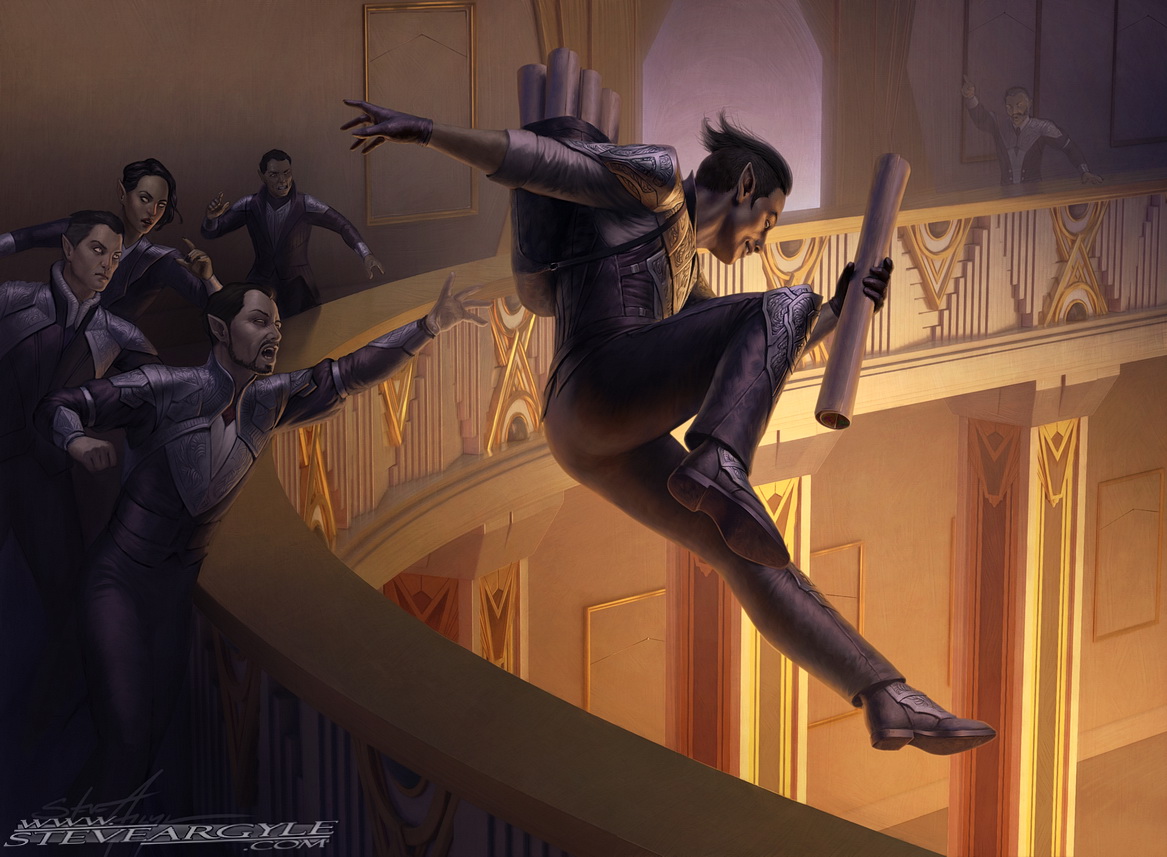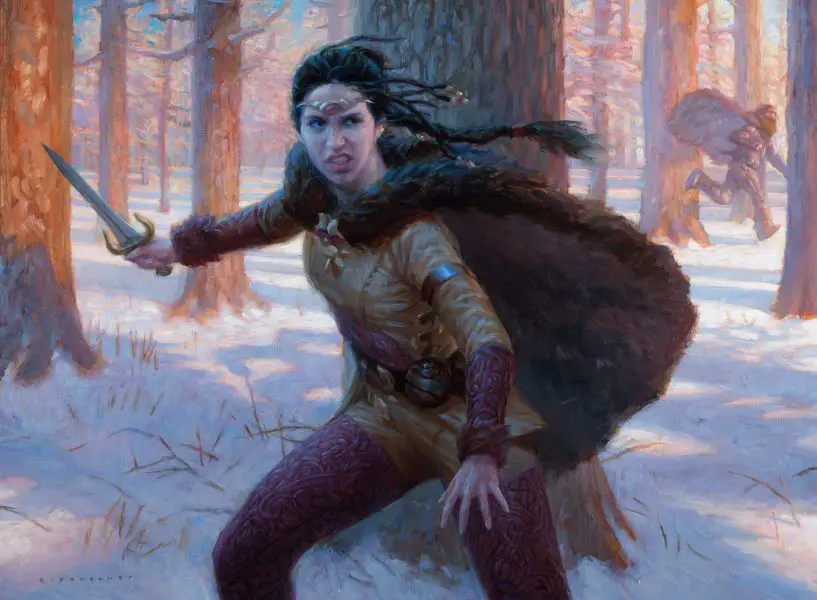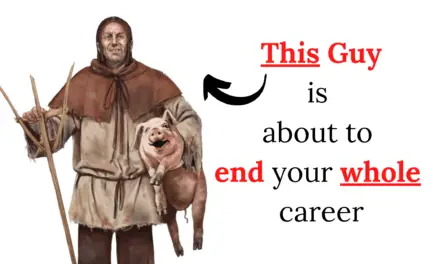Whether you’re a seasoned scoundrel or a budding adventurer, understanding the ins and outs of Cunning Action is the key to elevating your Rogue game to new heights.
In this article, we’ll unravel the details of this versatile feature, showing you how to wield it with finesse and flair. We’ll dive into what Cunning Action is, explore its tactical applications, weigh its strengths and weaknesses, and even tackle some frequently asked questions.
So, grab your daggers and pull up your cloak, friends. It’s time to master the art of the Rogue’s Cunning Action!
What is Cunning Action 5e?
Cunning Action is the Rogue’s secret weapon in D&D 5e, unlocked at 2nd level. This nifty feature lets Rogues take a bonus action on each of their turns to either Dash, Disengage, or Hide.
Need to close the gap with an enemy? Dash.
Want to slip away without provoking attacks? Disengage.
Looking to disappear into the shadows and set up a sneak attack? Hide.
With Cunning Action, Rogues become masters of mobility and stealth, always staying one step ahead of danger. When it comes to outmaneuvering and outwitting your foes, this feature is your secret weapon.
Example 1: The Swift Escape
Imagine your Rogue is surrounded by a horde of goblins, each one ready to strike.
With a quick assessment of the battlefield, you decide it’s time to make a swift retreat. Using your Cunning Action to Disengage, you nimbly slip past the goblins without provoking any opportunity attacks.
Now free from immediate danger, you can reposition yourself for a better vantage point or regroup with your allies.
Example 2: The Sneaky Striker
You’re facing a fearsome Frost Giant, and your party needs every advantage to bring it down. As your turn comes up, you use your movement to dart behind some cover, then employ your Cunning Action to Hide.
With a successful Stealth check, you become “out of sight, out of mind” to the Giant. On your next turn, you spring from the shadows, delivering a devastating sneak attack that catches it completely off guard, tipping the scales in your party’s favor.

How to Use Cunning Action 5e Effectively
Cunning Action is the Rogue’s ace in the hole, a feature that can turn the tide of battle and make you the MVP of any adventuring party.
Here’s how to use it like a pro:
In Combat
- Dash Dash Revolution: Need to close the distance with a pesky spellcaster or make a quick getaway from a dangerous foe? Dash is your ticket. By using Cunning Action to Dash, you can double your movement speed, allowing you to zip across the battlefield like a shadow. This is perfect for getting into or out of sticky situations, positioning yourself for the perfect sneak attack, or simply outrunning danger.
- Disengage and Disappear: Ever find yourself surrounded by enemies, each one ready to take a swing as soon as you move? Disengage is your best friend. By using Cunning Action to Disengage, you can move away from foes without provoking opportunity attacks. This lets you reposition safely, whether you’re retreating to a safer spot, setting up your next attack, or just buying yourself some breathing room.
- Hide and Sneak: Sometimes, the best offense is a good defense or, in the Rogue’s case, a good hiding spot. Using Cunning Action to Hide allows you to slip into the shadows and get the jump on your enemies. This is especially useful for setting up devastating sneak attacks. Find some cover, make a successful Stealth check, and watch as your enemies scramble to find you while you plot your next move.
Out of Combat
- Hauling Dash: Outside of combat, Dash can be a lifesaver in timed challenges or when exploring vast areas. Need to outrun a collapsing tunnel or catch up to a fleeing NPC? Dash doubles your movement, giving you the speed to meet these challenges head-on. If you’re using Cunning Action outside of combat, this is almost certainly the option you’re using.
- Non-Combat Disengage: The only out-of-combat situation I can think of where Cunning Action’s Disengage could be helpful is if you find yourself being questioned by guards. If you tried to make a run for it, they might get a chance to try to restrain you. However, using Cunning Action to Disengage as a bonus action and then using your action to Dash means you might be able to make a slippery escape.
- Quick Hiding Spot: Most of the time, you won’t need to use Cunning Action to Hide as a bonus action outside of combat. However, in a chaotic enough scene, there might be questions as to just how much you’re able to do at a time. In those moments, Cunning Action can be useful for explaining how your Rogue is able to quickly find a hiding spot in addition to doing other things.
By mastering these tactics, you’ll make the most of Cunning Action, turning your Rogue into a versatile and unpredictable force on the battlefield and beyond.

Pros and Cons of Cunning Action 5e
Cunning Action is a vital feature for Rogues that should not be underrated. But, like any powerful tool, it comes with its own set of advantages and drawbacks.
Let’s break them down:
Pros
- Increased Mobility: With Cunning Action, you’re not just moving… you’re practically teleporting across the battlefield! The ability to Dash as a bonus action means you can close gaps, retreat, and reposition with ease, outmaneuvering foes who can only dream of keeping up with your speed.
- Enhanced Survivability: Disengage is your get-out-of-jail-free card. When surrounded or outnumbered, this action lets you slip away without a scratch, avoiding opportunity attacks and keeping you in the fight longer. It’s perfect for those nail-biting moments when staying put means certain doom.
- Stealth Mastery: Hide as a bonus action turns you into a ghost. Whether you’re setting up for a sneak attack or simply avoiding detection, this ability ensures you remain unseen and unpredictable. It’s a Rogue’s bread and butter, making you the ultimate ambush predator.
- Versatility: Cunning Action isn’t just for combat. Its utility extends to non-combat scenarios, making you invaluable in exploration, stealth missions, and any situation where speed and stealth are key. This is a humble little feature that does a lot of heavy lifting for the Rogue!
Cons
- Action Economy: As powerful as Cunning Action is, it’s still limited to one bonus action per turn. This means you’ll need to make strategic choices about when and how to use it. Balancing Dash, Disengage, and Hide with other potential bonus actions can be a tricky dance.
- Class Dependency: While Cunning Action is a standout feature, it can sometimes overshadow other class features or party roles if not balanced properly. It’s important to remember that you’re part of a team, and relying too heavily on Cunning Action might limit your engagement with other aspects of your character or party dynamics.
- Situational Effectiveness: Cunning Action shines in combat and stealth scenarios, but there will be times when its utility is less apparent. This feature takes a backseat in social encounters or puzzles where movement and stealth aren’t factors, leaving you to rely on your other skills and abilities.
By understanding these pros and cons, you can wield Cunning Action to its fullest potential, maximizing its benefits while mitigating its limitations.
This balanced approach will ensure your Rogue remains a versatile and formidable force, ready to tackle any challenge that comes your way.
FAQs – Cunning Action 5e
Rogues gain the Cunning Action feature at 2nd level. This early acquisition allows them to start leveraging their enhanced mobility and stealth capabilities right from the beginning of their adventuring career.
Cunning Action can synergize beautifully with other Rogue features and feats.
For example, the Mobile feat can further enhance your movement capabilities, while the Skulker feat can improve your hiding abilities. Additionally, combining Cunning Action with the Rogue’s Sneak Attack can create devastating combos, allowing you to strike swiftly and disappear before your enemies can react.
No, you can only use Cunning Action once per turn, as it consumes your bonus action. However, this still provides a significant tactical advantage, allowing you to perform actions that other classes might struggle to achieve without expending additional resources.
Yes, Cunning Action is a feature unique to the Rogue class in D&D 5e.
While other classes may have abilities that grant similar benefits (such as the Monk’s Step of the Wind), Cunning Action’s specific combination of Dash, Disengage, and Hide as a bonus action is exclusive to Rogues.
Conclusion – Cunning Action 5e
Whether you’re darting across the battlefield, slipping away from danger, or vanishing into the shadows, Cunning Action empowers you to shape the flow of combat and exploration with unparalleled finesse.
By mastering this versatile tool, you’ll not only enhance your Rogue’s effectiveness but also bring a dynamic edge to your entire adventuring party. So, the next time you find yourself in a tight spot, remember: with Cunning Action, you’ve always got an ace up your sleeve.
We’d love to hear your thoughts and stories about using Cunning Action in your games! Share your experiences in the comments below and let us know how this feature has saved the day (or night) for your Rogue.
And if you enjoyed this deep dive into one of D&D 5e’s most exciting features, be sure to sign up for the Tabletop Joab newsletter. Stay updated with more tips, tricks, and insights to level up your game and keep your adventures fresh and exhilarating.









